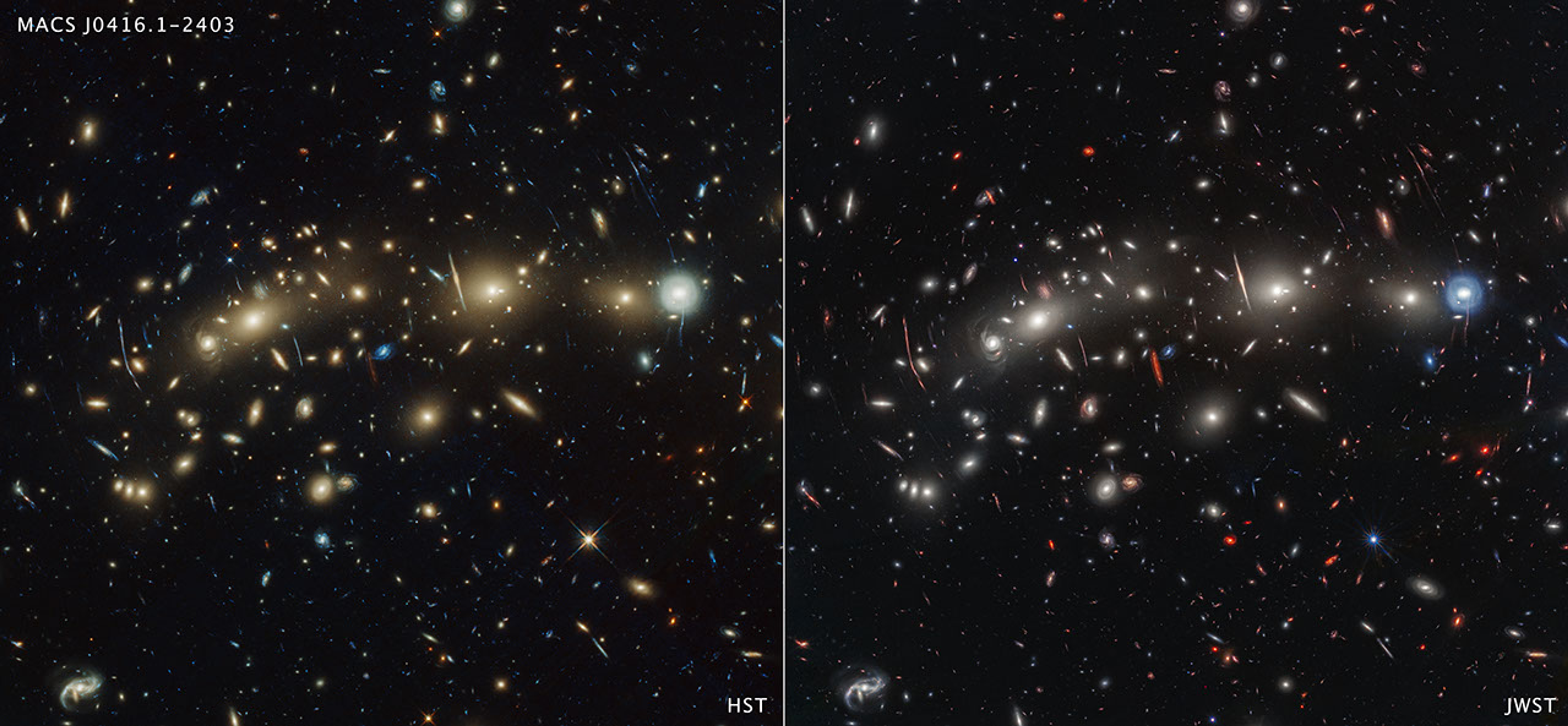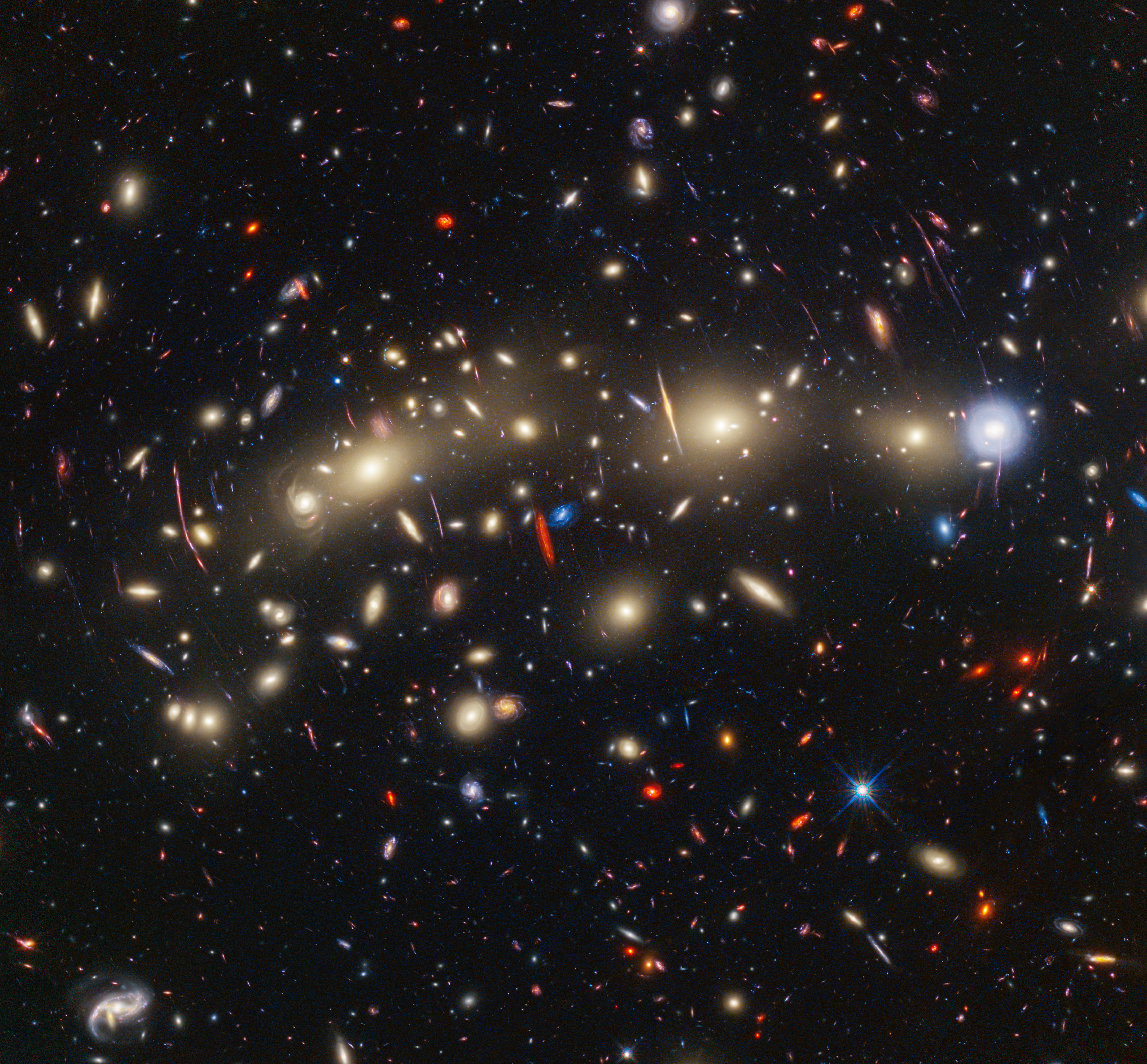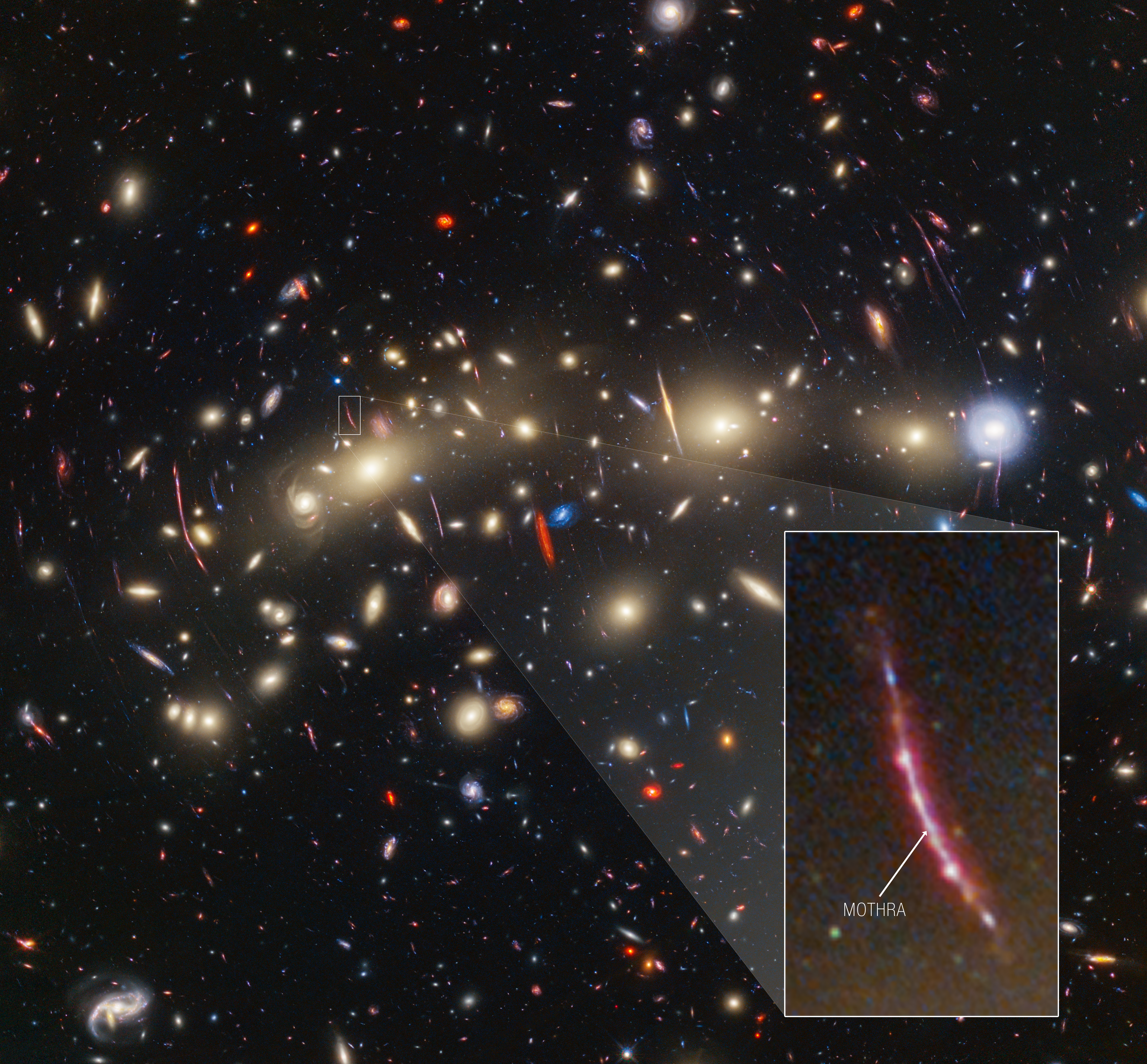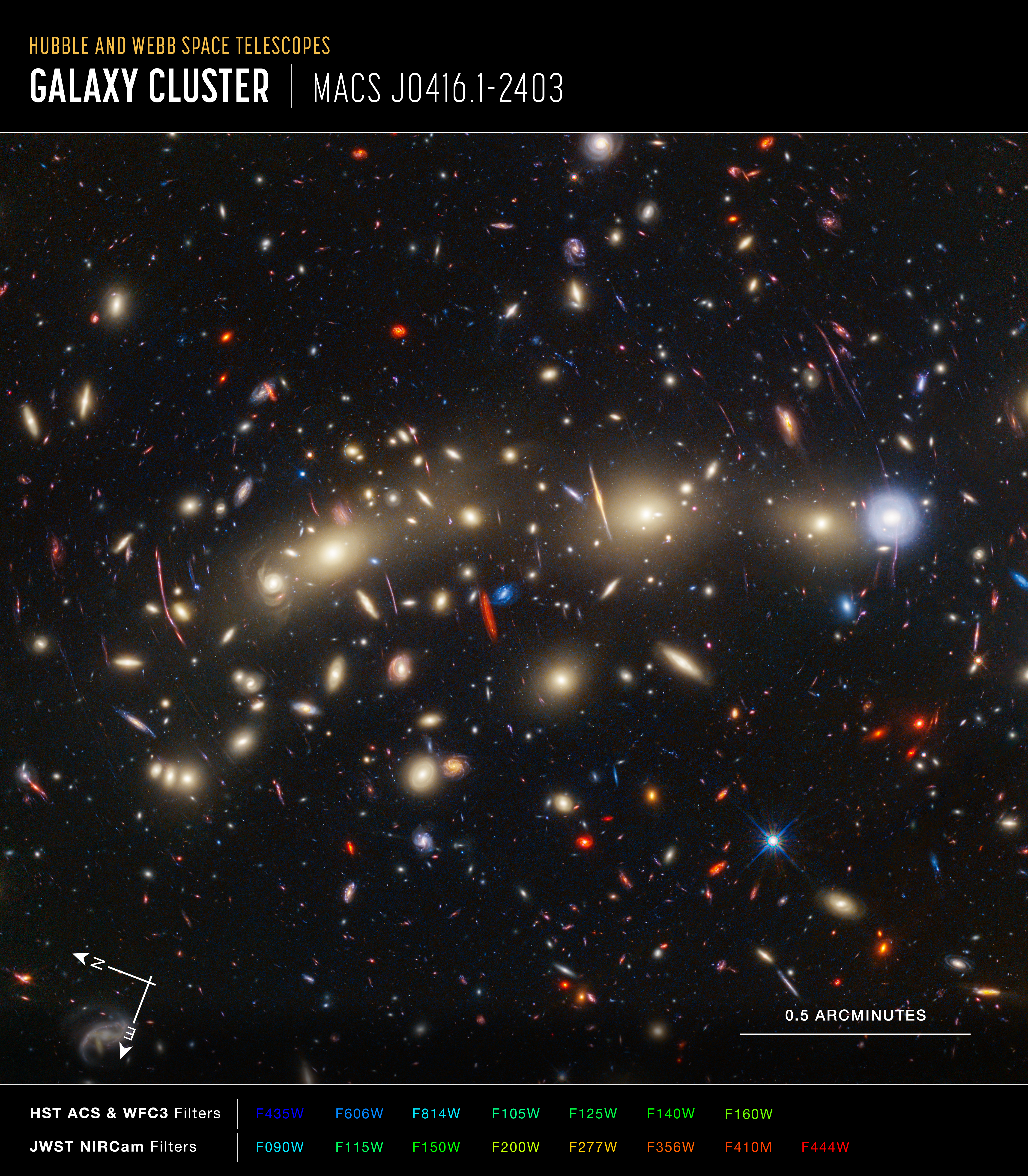1 min read
MACS 0416 (Hubble and Webb Compared)

This side-by-side comparison of galaxy cluster MACS0416 as seen by the Hubble Space Telescope in optical light (left) and the James Webb Space Telescope in infrared light (right) reveals different details. Both images feature hundreds of galaxies, however the Webb image shows galaxies that are invisible or only barely visible in the Hubble image. This is because Webb’s infrared vision can detect galaxies too distant or dusty for Hubble to see. (Light from distant galaxies is redshifted due to the expansion of the universe.) The total exposure time for Webb was about 22 hours, compared to 122 hours of exposure time for the Hubble image.
About the Object
- R.A. PositionR.A. PositionRight ascension – analogous to longitude – is one component of an object's position.04:16:9.89
- Dec. PositionDec. PositionDeclination – analogous to latitude – is one component of an object's position.-24:03:58.0
- ConstellationConstellationOne of 88 recognized regions of the celestial sphere in which the object appears.Eridanus
About the Data
- Data DescriptionData DescriptionProposal: A description of the observations, their scientific justification, and the links to the data available in the science archive.
Science Team: The astronomers who planned the observations and analyzed the data. "PI" refers to the Principal Investigator. - InstrumentInstrumentThe science instrument used to produce the data.HST ACS & WFC3; JWST NIRCam
- Exposure DatesExposure DatesThe date(s) that the telescope made its observations and the total exposure time.HST: July 2012 - Feb 2023 JWST: 7 Oct 2022, 29 Dec 2022, 10 Feb 2022
- FiltersFiltersThe camera filters that were used in the science observations.HST ACS: F435W, F606W, F814W; WFC3/IR: F105W, F125W, F140W, F160W; JWST NIRCam: F090W, F115W, F150W, F200W, F277W, F356W, F410M, F444W
- Object NameObject NameA name or catalog number that astronomers use to identify an astronomical object.MACS J0416.1-2403
- Object DescriptionObject DescriptionThe type of astronomical object.Lensing Galaxy Cluster
- Release DateNovember 9, 2023
- Science ReleaseNASA’s Webb, Hubble Combine to Create Most Colorful View of Universe
- CreditImage: NASA, ESA, CSA, STScI; Image Processing: Joseph DePasquale (STScI)
Related Images & Videos

MACS 0416 (Hubble ACS and WFC3 + Webb NIRCam Image)
This panchromatic view of galaxy cluster MACS0416 was created by combining infrared observations from NASA’s James Webb Space Telescope with visible-light data from NASA’s Hubble Space Telescope. To make the image, in general the shortest wavelengths of light were color-coded...

MACS 0416 Mothra Pullout (Hubble ACS and WFC3 + Webb NIRCam Image)
This image of galaxy cluster MACS0416 highlights one particular gravitationally lensed background galaxy, which existed about 3 billion years after the big bang. That galaxy contains a transient, or object that varies in observed brightness over time, that the science team...

MACS 0416 (Hubble + Webb Compass Image)
Image of galaxy cluster MACS0416 captured in visible light by Hubble’s ACS and WFC3 and in infrared light by Webb’s NIRCam, with compass arrows, scale bar, and color key for reference. The north and east compass arrows show the orientation of the image on the sky. Note that the...
Share
Details
Laura Betz
NASA’s Goddard Space Flight Center
Greenbelt, Maryland
laura.e.betz@nasa.gov
NASA, ESA, CSA, STScI
Joseph DePasquale (STScI)






























